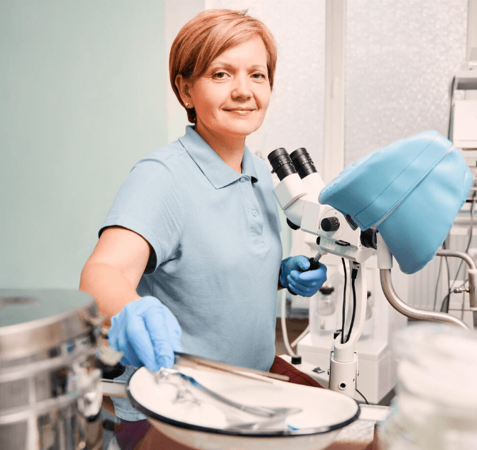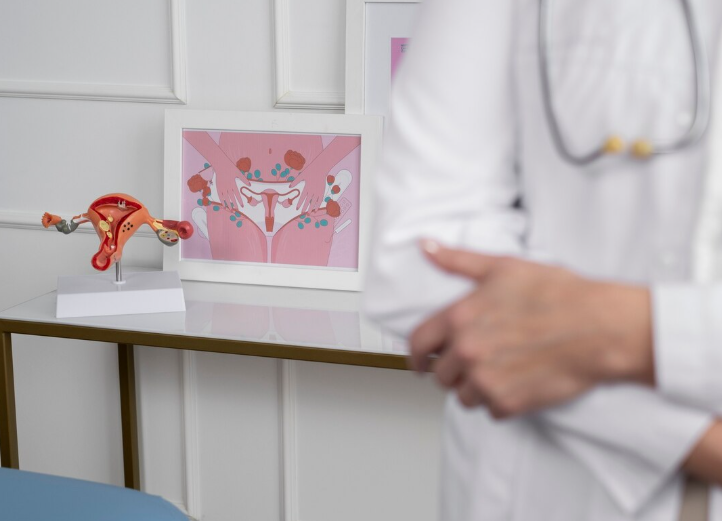Treatment Overview
Pelvic pain in women is a multifaceted condition that can arise from gynecologic, urinary, gastrointestinal, or musculoskeletal causes. The Comprehensive Pelvic Pain Assessment in Korea is designed to provide a thorough and precise evaluation to determine the underlying cause of pelvic discomfort.
Korea has emerged as a global leader in women’s health by combining cutting-edge diagnostic technology with multidisciplinary expertise. This program integrates advanced imaging techniques, laboratory analysis, and minimally invasive procedures to ensure a holistic understanding of pelvic pain. The goal is not only to diagnose but also to pave the way for targeted and effective treatment plans tailored to each patient’s needs.
This comprehensive approach is ideal for women who experience chronic pelvic pain, recurrent discomfort during menstruation, unexplained pelvic pain, or conditions such as endometriosis, pelvic inflammatory disease, ovarian cysts, or fibroids.
Purpose & Benefits
The purpose of the Comprehensive Pelvic Pain Assessment is to:
- Provide a complete evaluation to identify the exact source of pelvic pain.
- Prevent unnecessary procedures by enabling accurate diagnosis.
- Facilitate targeted treatment planning.
- Enhance quality of life by reducing pain and related symptoms.
Benefits of this program include early detection of underlying conditions, reduced treatment delays, increased effectiveness of therapies, and a better understanding of pelvic health. Patients also gain reassurance from receiving care through Korea’s advanced medical system, known for precision and innovation.
Ideal Candidates
This program is designed for women who:
- Suffer from chronic pelvic pain lasting more than six months.
- Have unexplained pelvic pain despite previous evaluations.
- Experience severe menstrual cramps that affect daily life.
- Suspect conditions such as endometriosis, adenomyosis, or ovarian cysts.
- Wish to receive a detailed diagnostic evaluation in a world-class medical facility.
Women across all age groups, including adolescents and reproductive-age women, can benefit from this program. International patients also often choose Korea due to its advanced healthcare system and patient-focused services.
Possible Risks & Complications
The diagnostic process is generally safe, with minimal risks. Possible complications include:
- Temporary discomfort during imaging or diagnostic procedures.
- Mild cramping after pelvic examination.
- Rare allergic reactions to contrast agents used in MRI or CT scans.
- Slight risk of infection or injury in invasive procedures such as laparoscopy.
Korea’s healthcare facilities maintain strict safety standards and have emergency protocols in place to minimize risks.
Techniques Used
The Comprehensive Pelvic Pain Assessment uses a multidisciplinary diagnostic approach with advanced technology, including:
- High-Resolution Pelvic Ultrasound: Detailed imaging of pelvic organs to detect abnormalities.
- Magnetic Resonance Imaging (MRI): High-definition imaging to evaluate soft tissue, detect endometriosis, adenomyosis, or structural anomalies.
- Laparoscopy: Minimally invasive surgery for direct visualization and diagnosis of pelvic conditions.
- Hysteroscopy: Direct examination of the uterine cavity for abnormalities.
- Laboratory Testing: Hormonal, inflammatory, and infection markers to support diagnosis.
- Pain Mapping & Physiotherapy Assessment: Evaluation of musculoskeletal causes of pain.
Korean hospitals often employ AI-assisted diagnostics and 3D ultrasound technology for enhanced precision.
Recovery & Aftercare
Most assessments are non-invasive, allowing patients to resume normal activities immediately. For minimally invasive procedures such as laparoscopy, recovery usually takes a few days. Aftercare involves:
- Detailed consultation to discuss diagnostic findings.
- Personalized treatment plans based on the results.
- Follow-up evaluations to ensure progress and symptom relief.
- Guidance for pain management and rehabilitation if required.
Korean clinics focus on clear communication, ensuring patients understand their diagnosis and next steps.
Results & Longevity
The comprehensive approach results in:
- Accurate diagnoses with fewer misdiagnoses.
- More effective treatment plans.
- Reduction of chronic pelvic pain over time.
- Long-term improvement in quality of life.
By addressing the root cause of pelvic pain, results are lasting, with fewer relapses and better overall health outcomes.
Treatment Process in Korea
The process for the Comprehensive Pelvic Pain Assessment in Korea usually begins with:
- A detailed consultation to review medical history and symptoms.
- Physical and pelvic examination.
- Advanced imaging such as high-resolution ultrasound or pelvic MRI.
- Laboratory testing for infections, hormonal imbalance, and inflammatory markers.
- If indicated, hysteroscopy or laparoscopy for direct evaluation.
- Final consultation to present results and discuss treatment options.
Korean hospitals such as Samsung Medical Center, Asan Medical Center, CHA Bundang Women’s Hospital, and Severance Hospital use multidisciplinary teams to ensure precise diagnosis and comprehensive care. This integration of advanced diagnostics, technology, and patient-centered services makes Korea a top destination for pelvic pain evaluation.
Cost Range
- Basic pelvic pain consultation with ultrasound: ₩250,000–₩450,000 KRW ($180–$350 USD).
- Advanced MRI or CT scan: ₩600,000–₩1,300,000 KRW ($450–$1,000 USD).
- Laparoscopic diagnostic procedures: ₩2,000,000–₩4,500,000 KRW ($1,500–$3,500 USD).
- Comprehensive pelvic pain assessment packages: ₩1,800,000–₩5,000,000 KRW ($1,400–$3,800 USD).
Package prices depend on the number and type of tests included, offering flexibility and cost efficiency.
Popular Clinics in Korea
- Samsung Medical Center — World-class pelvic pain center with advanced diagnostic technology.
- Asan Medical Center — Offers cutting-edge imaging and minimally invasive diagnostics.
- CHA Bundang Women’s Hospital — Specializes in gynecologic and pelvic pain evaluations.
- Severance Hospital, Yonsei University — Renowned for integrated diagnostics and personalized care.
- Kyung Hee University Medical Center — Combines advanced diagnostics with holistic care approaches.




